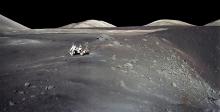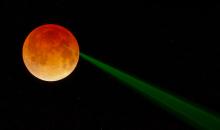Listen to today's episode of StarDate on the web the same day it airs in high-quality streaming audio without any extra ads or announcements. Choose a $8 one-month pass, or listen every day for a year for just $30.
You are here
John Houbolt
When engineers first pondered how to send astronauts to the Moon, they thought big. They planned on sending a single rocket — like the rockets in 1950s science fiction. It would fly directly to the Moon, land, then take off and head straight for home.
Such a rocket would have been expensive and taken many years to develop. Astronauts wouldn’t have landed until well after the end-of-the-’60s deadline imposed by President John F. Kennedy.
But an engineer who was born 100 years ago today had a better idea — one that met Kennedy’s goal.
John Houbolt was born in Iowa and grew up in Illinois. He earned degrees in engineering and, in 1942, he went to work for NASA’s predecesor.
When NASA began planning the lunar landing, Houbolt advocated a technique called lunar orbit rendezvous. It would use two spacecraft. Astronauts would leave the mothership and climb into a separate lander. After they’d finished their work on the Moon, they’d rendezvous with the mothership in lunar orbit. Houbolt said the technique would be cheaper, faster, and safer than a one-rocket show.
NASA brass did not agree, though. Houbolt finally pitched the idea in a letter to the associate administrator. Houbolt recalled what happened next:
The scheme worked — sending astronauts to the Moon and safely back to Earth.
Script by Damond Benningfield





